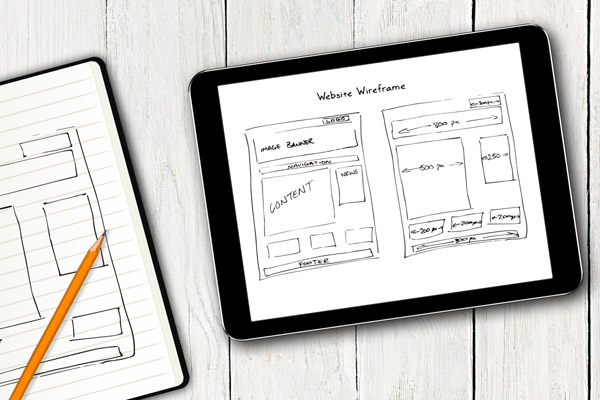We’re pleased to offer a free website consultation. Call today, (303) 357-5757, or e-mail dbc@dbcdigital.com.
As a business owner, when was the last time you thought about your website’s design?
Chances are you put up a website, called it good, went out for pizza and went on with the day-to-day business of running your company.
But there have been a lot of changes in the world of marketing over the last few years, and your website is one of the most important parts of your marketing and branding.
Like it or not, your website is a 24/7 online rep for your company. When people judge your website, they’re judging your company.
If your site is falling behind in any of these four categories, you’re likely losing prospects and money.
-
Your Website is Showing its Age
For most prospects, your website is the first time they’ll meet “you.” Even if they find you another way, you can bet they’re going to jump online and visit your website.
81% of customers search online before buying a product or service, so your customers will have already formed an impression about you and your company before they decide to buy.
It only takes .02 seconds for a person to form a first impression of your site. And that first internet impression is a doozy.
Think about it this way, if someone with dry, frizzy hair with an outdated cut tries to sell you the latest hair products, you’re probably not buying what they’re selling.
You do not want your website to be the mullet-cut of the internet.
And internet time moves much faster than regular time. Consider the shelf life of a meme before it dies. What looked ground-breaking a few months ago might look pretty dated today.
If you have an outdated site that doesn’t represent your brand the way it should, you’re losing business.
-
Your Website Isn’t Mobile-Responsive
According to Google, there’s over a 50% chance you’re reading this on your phone right now. The way we’re searching is drastically changing and anyone who’s been out in public knows how much time we spend on our phones.
“Responsive” is just a fancy way of saying your site automatically adapts to fit the screen you’re viewing it on, whether it’s computers, phones or tablets.
Mobile responsive design is a website must, not only because that’s how people search, but also because Google demands it.
If your site doesn’t look good on a phone or tablet, then Google is going to ding you. So even when someone’s searching for what you sell, you’re not going to show up as high in search rankings.
Search engines expect responsive design. It’s like if you showed up to buy a new car and it didn’t have any wheels.
-
Your Website SEO Isn’t Cutting It
Most people know that SEO is the key to ranking high in web searches. Google is constantly updating their SEO rules again-and-again. To maintain or improve your ranking in searches you need to constantly adapt.
Long gone are the days when you could toss up some cut-rate article with the right keywords and expect it to get clicks.
Google is wise to these shenanigans and they’re always revamping their calculations so their search results are always providing the best answers for their visitors.
That means if someone’s searching for “Denver web design companies,” or “the best pizza in the Highlands,” Google’s going to make sure they get the right matches.
Until we overthrow our Google overlords, we must play by their rules. (Just kidding Google, you’re the best!)
The bad news is that it takes a lot of work to stay on Google’s good side. You can no longer just put up a website and leave it. Google expects regular site updates and wants to see you consistently adding quality content.
If you haven’t updated your site in a while, those little search engine crawlers will pass you by.
The good news is that if you’re providing the kind of high-quality content Google and your prospects love, and have the right SEO baked into your site, you’re going to show up higher in Google searches.
The more you update your website content, the better off you’ll be. So, if you haven’t updated your site in a while, you need to hit “refresh.”
-
Your Website Isn’t Easy to Navigate
As you skim this article, you’re probably aware that our attention spans are shrinking. Remember how you have less than a second to make a good impression?
Well if you don’t make it super easy for your clients to navigate your site they’re going to move on.
Great user experience (UX) design isn’t just an added bonus, your customers are demanding it.
We live in the land where we want it easy and we want it now. If your site isn’t easy to use or takes too long to load (not more than 2-3 seconds on mobile), we’re going to move on to watch some cat videos or check our Instagram for the tenth time.
The good news is you don’t have to guess how people feel about your site. Check your web analytics. It’ll tell you what happens when visitors reach your site.
Do you have a high bounce rate? Are people leaving your site too soon? Do you have a low number of pageviews per visitor? What site pages are visitors spending the most time on?
If your customers are calling it quits too early, that probably means your site isn’t keeping them engaged or they’re having a hard time finding what they want.
Your web analytics are a great place to discover what’s working and what isn’t.
High bounce rate? It’s time to change it up.
It All Comes Down to This
Your website needs to make it easy for your potential customers.
If your site isn’t properly representing your brand, or is hard to view on mobile devices, isn’t easy to find in a search or is hard to navigate, then you need to update.
I know, I know, updating your website sounds like such a pain. The good news is it doesn’t have to be hard or expensive or painful but if it’s not getting the job done, it does need to happen.
Just imagine what you and your pretty new site can accomplish with a fresh cut and style.
Give us a call to talk about what new options might work for you.
Please note: DBC Digital is a full-service marketing agency in the Denver metro area. We’re in Centennial, just off I-25 and Dry Creek. We work with clients throughout Colorado and the U.S., in a variety of industries, including: real estate, financial, insurance, and mortgage.


